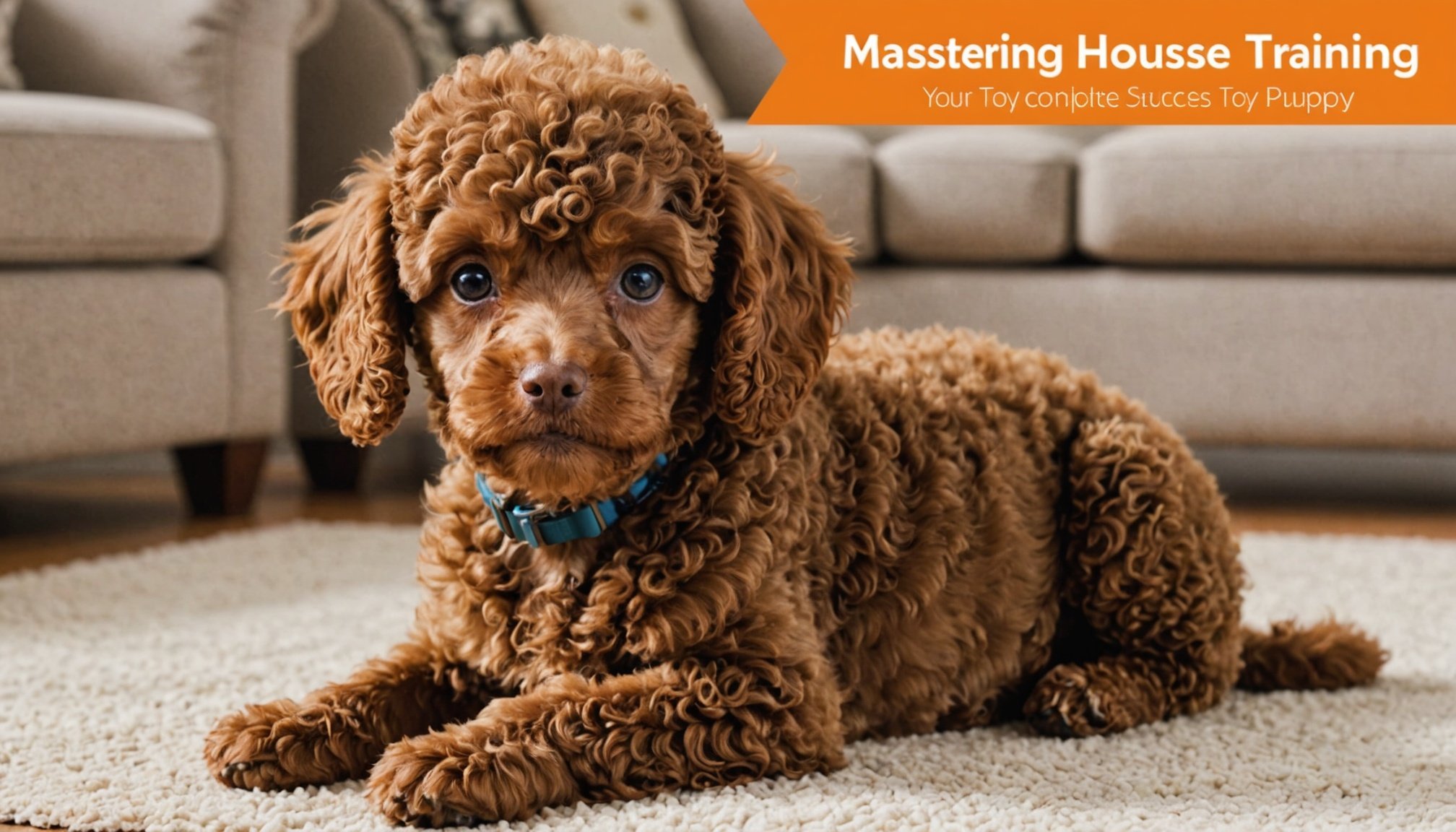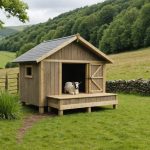Understanding Housetraining Basics
Housetraining fundamentals are crucial for establishing good habits in your toy poodle and ensuring a harmonious home environment. Unlike other breeds, toy poodles exhibit behaviors that necessitate specific training techniques tailored to their unique temperament and intelligence. Understanding these differences is pivotal. They are known for their keen intelligence and quick learning ability, making them responsive to housetraining when appropriate methods are applied.
Several key terms and techniques underpin the housetraining process, such as crate training and positive reinforcement. Crate training involves teaching the puppy to view their crate as a safe space, which helps regulate potty schedules. Positive reinforcement is essential, rewarding the puppy for correct bathroom behavior, which encourages them to repeat the action.
Topic to read : Unlocking Success: The Ultimate Housetraining Plan for Your Toy Poodle Puppy
While housetraining toy poodles, it is important to be patient and persistent. Consistency in training routines and schedules is of utmost importance as it helps in setting expectations for the puppy. A well-defined framework incorporating housetraining fundamentals ensures that your poodle develops positive bathroom habits, making the training process smoother and more effective over time.
Preparing for Housetraining Success
Preparing effectively for housetraining is vital to achieving success with your toy poodle. Creating a training environment that is conducive to learning involves careful consideration of the training space. Select an area that is easily accessible and comfortable for the puppy while minimizing distractions. This might include a designated potty corner with housetraining pads to minimise mess.
Also read : Proven strategies to alleviate separation anxiety in boxers left alone for long hours
Creating an Optimal Training Space
When setting up your training environment, consider incorporating essential tools and supplies such as a quality leash, reliable housetraining pads, and a durable crate. A crate not only aids in managing your poodle’s potty schedule but also provides them with a sense of security.
Establishing a Routine
One of the fundamental elements of successful housetraining is establishing a consistent schedule for potty breaks. Regular intervals help set expectations for your puppy, making it easier for them to understand when to conduct their business. Consider aligning these breaks with the puppy’s natural rhythms, like after meals or naps, to reinforce positive habits.
Investing time in crafting an optimal environment and routine from the onset can significantly ease the housetraining journey, laying a sound foundation for your toy poodle’s development.
Step-by-Step Housetraining Techniques
Housetraining your toy poodle using efficient techniques is pivotal for success. Begin by understanding the significance of crate training. This method involves using a crate to teach your poodle that it is a secure refuge, thus assisting in managing potty schedules. Initiating this step-by-step aids in minimizing incidents and fostering discipline.
Another cornerstone of effective housetraining is leveraging positive reinforcement. The use of treats, physical affection, and verbal praise as rewards for successful bathroom behaviours enhances the learning curve. When a toy poodle associates these positive experiences with their actions, they are more inclined to repeat desired behaviours.
The role of monitoring and supervision in the housetraining process cannot be overstated. Keeping a watchful eye on your poodle helps identify cues indicating their need for a bathroom break, allowing for timely interventions. It is also crucial for early detection of potential behavioural issues that might impede progress.
Incorporating these housetraining methods not only enriches the learning experience for your toy poodle but also strengthens your bond, establishing an environment where both pet and owner thrive. Adapt these strategies based on your pet’s unique personality for optimal results.
Common Challenges and Solutions
Housetraining can come with a few bumps along the way. Understanding housetraining issues is the first step in troubleshooting effectively.
Accidents and Their Causes: Accidents are part of the learning curve. They often result from not recognising your toy poodle’s signals or not taking them out frequently enough. To minimise these, monitor your poodle closely for signs like circling or sniffing the floor. Immediate outdoor trips when these behaviours occur can avoid indoor mishaps.
Overcoming Behavioural Issues: Stress or anxiety may hinder progress. Look out for cues such as excessive barking or destructive chewing. These behaviours can often be alleviated by ensuring your toy poodle receives proper exercise and mental stimulation, creating a balanced environment.
Reinforcing Good Behaviour: Each success in housetraining is a victory. Emphasising positive experiences with treats or praise ensures your poodle associates eliminating outside with rewards. Consistency is key—always reinforce swiftly after successful bathroom activities, so your toy poodle links the reward to the behaviour. This strategy not only motivates but also structures learning, creating a positive housetraining experience.
Timeline for Housetraining Success
Understanding the housetraining timeline is crucial for setting realistic expectations and achieving success with your toy poodle. Typically, the process unfolds in stages, reflecting the puppy’s development milestones. On average, toy poodles start developing control over their bladder and bowels by three to four months. However, the complete housetraining journey often extends over several months, influenced by individual factors like temperament and training consistency.
Factors affecting the timeline include the puppy’s age and personality. Younger poodles require more frequent potty breaks due to less developed control, while more stubborn personalities might need additional patience and persistence. Naturally fast learners, these poodles can benefit from well-structured routines that enhance their learning pace.
Adjust expectations based on your poodle’s unique behaviours. Some puppies may excel in understanding potty breaks quickly, while others might take longer, necessitating more reinforcement. More control is often observed by six months, but complete independence might occur closer to a year. Consistent positive reinforcement, patience, and adapting strategies to suit your puppy will ease and effectively progress the training journey.
Insights into Toy Poodle Behavior
Understanding toy poodle behavior is essential for effective training. These dogs are known for their keen intelligence, which, combined with specific personality traits, influences their housetraining and general responsiveness.
Understanding Personality Traits
Toy poodles often display high energy and curiosity. Their intelligence facilitates learning, but their inquisitive nature can lead to distractions. Consistent and engaging training helps harness these traits positively, turning potential challenges into opportunities for growth.
Socialization Needs
Proper socialization is crucial to prevent behavioral problems. Toy poodles need exposure to various environments, people, and other animals to foster friendly interactions and reduce anxiety. Early and frequent social encounters contribute significantly to a well-rounded training experience.
Handling Distractions
Due to their alertness and curiosity, toy poodles can be easily distracted during training sessions. Minimizing distractions by choosing a controlled environment is essential. Incorporating short, focused sessions aligned with the poodle’s natural attention span can enhance learning and productivity. Additionally, patiently addressing distractions as they arise, using positive reinforcement, molds desirable behavior over time.
Utilizing Positive Reinforcement
Effectively employing positive reinforcement is central to achieving successful outcomes in toy poodle training. This involves rewarding good behaviours immediately to strengthen desired actions and encourage repetition.
Methods of Rewarding
- Treats are a practical choice, as they offer immediate gratification. Invest in healthy, small bites suitable for frequent use without overwhelming your toy poodle.
- Verbal praise is another powerful tool. Simple affirmations, like “good dog!” delivered warmly, can have a substantial impact.
- Physical affection, such as gentle petting, can reinforce pleasure and approval, strengthening your bond.
Timing and Consistency
The timing of rewards is critical. Always reward immediately after the correct behaviour to create a clear association. Consistency across different contexts—a key feature of positive reinforcement techniques—ensures that toy poodles understand the link between their actions and the rewards.
Appealing Rewards
Every toy poodle has preferences. Observe which rewards your poodle responds to most passionately—whether it’s a certain treat or enthusiastic praise—and incorporate those for extra motivation. This custom approach maximizes effective training rewards, catering to individual dog personalities while enhancing the training experience dramatically.
Frequently Asked Questions
Navigating housetraining can raise many questions, particularly for new toy poodle owners. One common inquiry is, “How do I speed up the training process?” While it is essential to acknowledge each dog’s unique pace, positive reinforcement consistently plays a pivotal role. Implement routines, reward anticipated behaviours promptly, and create an environment conducive to learning. Patience remains your most valuable tool.
Another frequent concern is, “Why does my toy poodle often have accidents despite routine training?” Accidents can stem from various causes, such as incomplete understanding of cues or anxiety. Recognize signs like circling or sniffing and respond promptly. Addressing underlying stress through calming exercises or environmental adjustments is also beneficial.
Misconceptions, such as “Toy poodles will naturally adapt without structured training,” can cause challenges. Although intelligent, these dogs still require guided instruction to master proper bathroom habits. Structure, consistency, and patience form the triad for successful housetraining.
For concerns like teaching poodles to signal bathroom needs, introducing bells as a cue can be effective. Each interaction should reinforce the action, helping them understand the link between the signal and the outcome.










